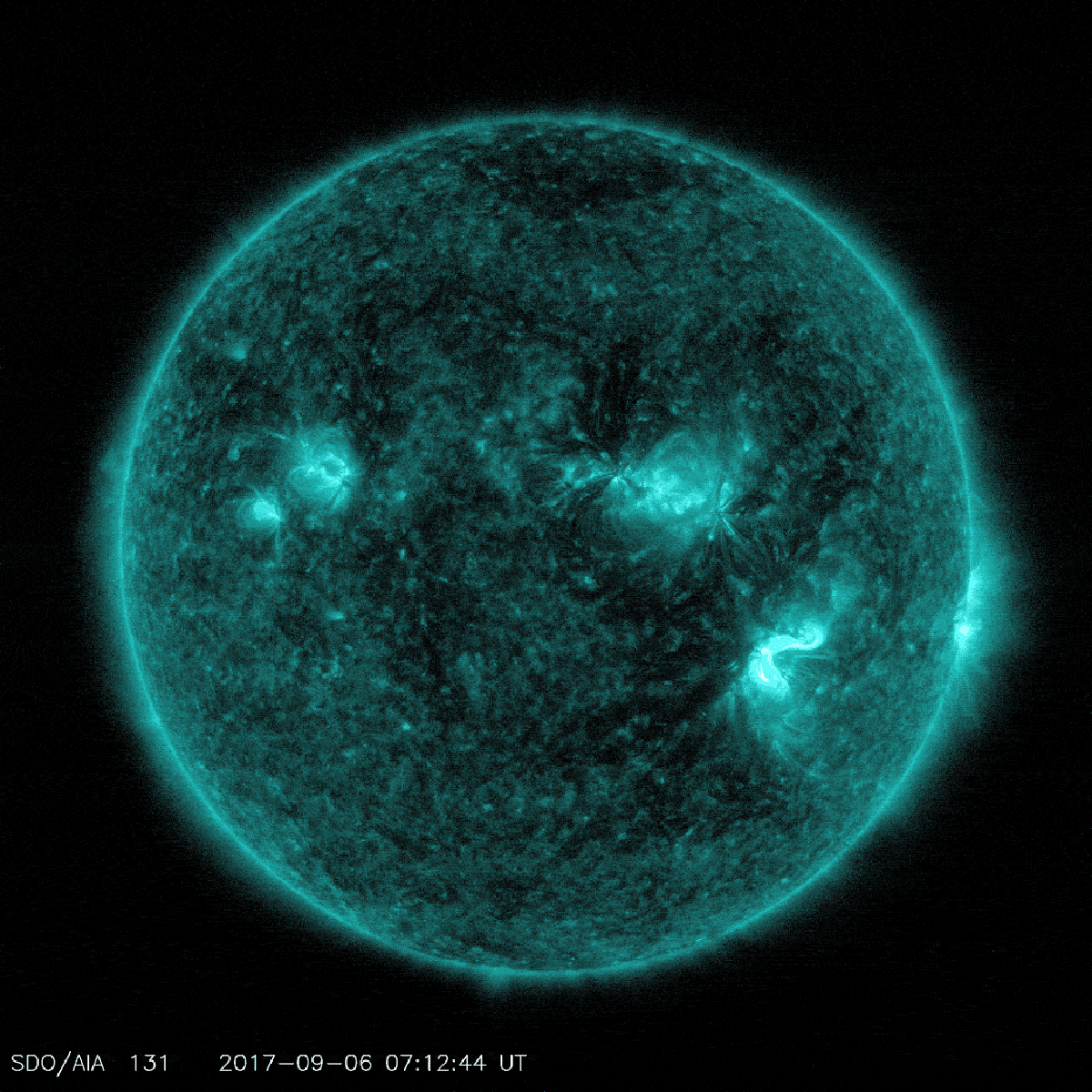
NASA has recorded the biggest solar flare for 12 years as the sun unleashed an X-Class flare on September 6. The flare, which peaked at 8.02am EDT, caused a radio blackout following the "shock arrival" of radiation from the sun.
The solar flare was the largest recorded since September 2005, when an X17 was released. X-class represents the most intense solar flares, with an X2 being twice as intense as an X1. The largest solar flare ever recorded was an X20 in April 2001.
The latest flare—an X9.3—was the second in a series of solar flares, with another smaller X2.2, recorded three hours earlier. Both were captured by NASA's Solar Dynamics Observatory, which is constantly monitoring the sun and its activity.
"Harmful radiation from a flare cannot pass through Earth's atmosphere to physically affect humans on the ground, however—when intense enough—they can disturb the atmosphere in the layer where GPS and communications signals travel," the space agency said in a statement.
The strong geomagnetic storm warning issued by NASA is, as of September 7, still in effect and will continue to be over the next few days. This is in anticipation of the arrival of the coronal mass ejection (CME) associated with the X9.3 flare. "Analysis indicates likely CME arrival late on 8 September into early 9 September," NASA said.
CMEs and solar flares are different phenomena but often occur at the same time when it comes to the strongest solar flares. Both are created when the sun's interior contorts its own magnetic fields—as the magnetic field snaps like a rubber band it releases a huge amount of energy into space. The flash of light and high energy particles released is the solar flare, while the solar matter from the magnetic contortions are CMEs.
A huge solar storm in 1859—known as the Carrington Event—caused telegraph systems across Europe and North America to fail and auroras associated with the solar winds could be seen as far south as the Caribbean. If a similar sized storm hit today, it is estimated it could cost around $2 trillion.

The X.9 flare is the biggest to be recorded in the current solar cycle—an 11 year period where the sun's activity increases and decreases. At the moment, we are headed towards a solar minimum. This is the phase where eruptions from the sun become increasingly rare. The next solar minimum is expected at some point between 2019 and 2020.
But the last few solar cycle have been baffling scientists. Over the last solar minimum (in 2010), sunspots were almost completely absent for a period of two years—something that had not been recorded for almost 100 years.
A recent study of the last 30 years' worth of data on the solar cycle indicates that the magnetic field distribution, where a lot of the magnetic activity is recorded, had become thinner in recent years. Scientists also found rotation rate of the sun has changed.
"This is not how it used to be and the rotation rate has slowed a bit at latitudes around about 60 degrees," study author Yvonne Elsworth, from the University of Birmingham, U.K, said. "We are not quite sure what the consequences of this will be but it's clear that we are in unusual times."
Uncommon Knowledge
Newsweek is committed to challenging conventional wisdom and finding connections in the search for common ground.
Newsweek is committed to challenging conventional wisdom and finding connections in the search for common ground.
About the writer
Hannah Osborne is Nesweek's Science Editor, based in London, UK. Hannah joined Newsweek in 2017 from IBTimes UK. She is ... Read more
To read how Newsweek uses AI as a newsroom tool, Click here.








